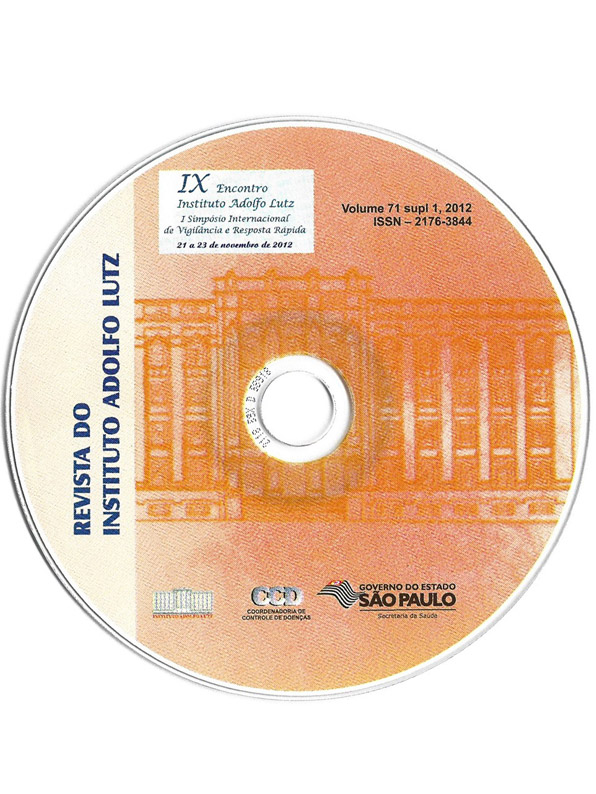Resumo
Foodborne disease outbreaks caused by Shiga toxin-producing Escherichia coli (STEC) have been reported worldwide. Cattle have been implicated as the principal reservoir of STEC, including the well known serotype O157:H7, which can cause significant morbidity and mortality, including hemolytic uremic syndrome. The aim of this study was to investigate the occurrence, serotypes and virulence markers of STEC in a locally sourced food with potential STEC contamination. A total of 70 samples of locally sourced kibbe, containing raw ground beef, were collected and analyzed at the Centro de Laboratório Regional of the Instituto Adolfo Lutz (IAL) of São José do Rio Preto, SP, Brazil. E.coli strains were isolatedaccording to Compendium of Methods for the Microbiological Examination of Foods and were analyzed by PCR for the stx1, stx2, eae, ehxA and ToxB gene sequences. The isolates containing the stx sequence gene were tested for cytotoxicity activity by a Vero cell culture assay. The serotypes were determined as described by Ewing (1986) and Scheutz (2005) at IAL of São Paulo, SP, Brazil. The susceptibility to antimicrobial agents was determined by the standard disk diffusion method (CLSI 2011). STEC strains were identified in two (2.9%) of the 70 samples analyzed. The STEC strains harbored stx1 sequence and the cytotoxin producing was confirmed in both strains. These strains belonged to serotypes O125:H19 and O149:H8 and were susceptible to the tested antimicrobials. Eae, ehxA and toxB sequences genes were not detected in both strains. Considering that in Brazil there are reports of isolation of this agent in raw ground beef, and clinical cases of diarrhea and hemolytic uremic syndrome, monitoring for this pathogen in raw ground beef products could offer a substantial improvement to food safety.

Este trabalho está licenciado sob uma licença Creative Commons Attribution 4.0 International License.
Copyright (c) 2012 JTM Peresi , SIL Silva , ISC Teixeira , IAZC Almeida , AK Ribeiro , SRS Pinheiro, AS Fernandes, TMI Vaz
